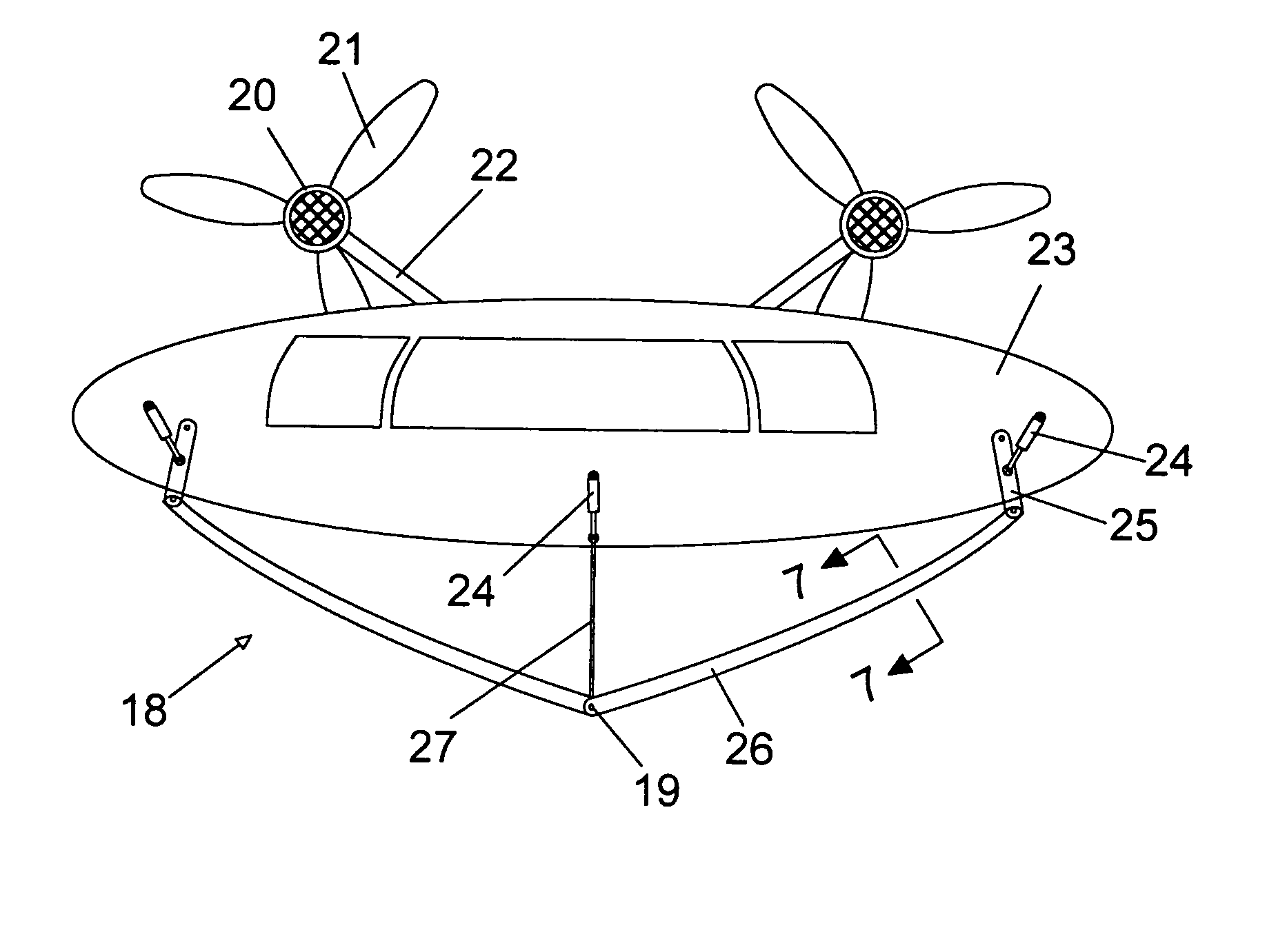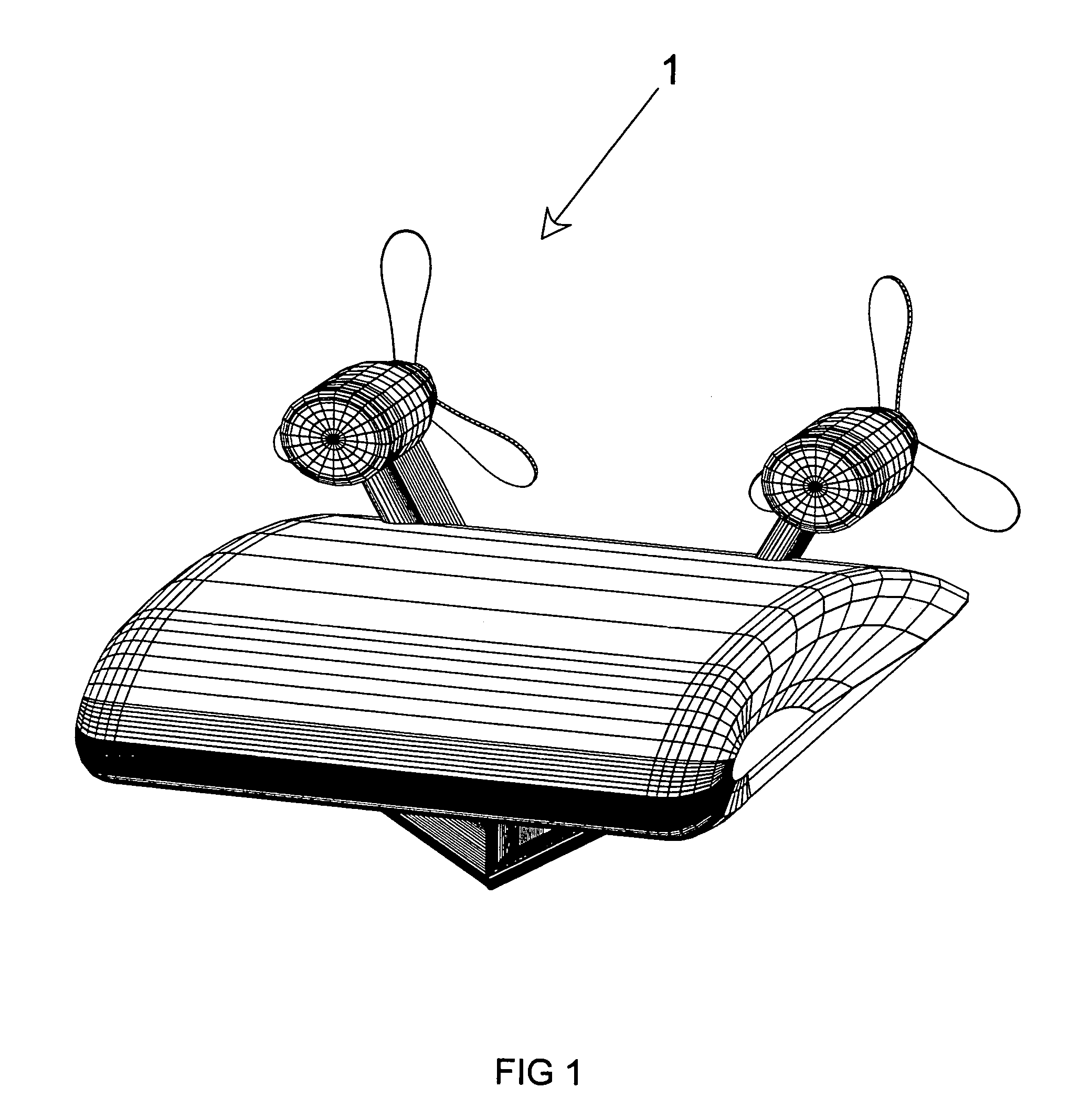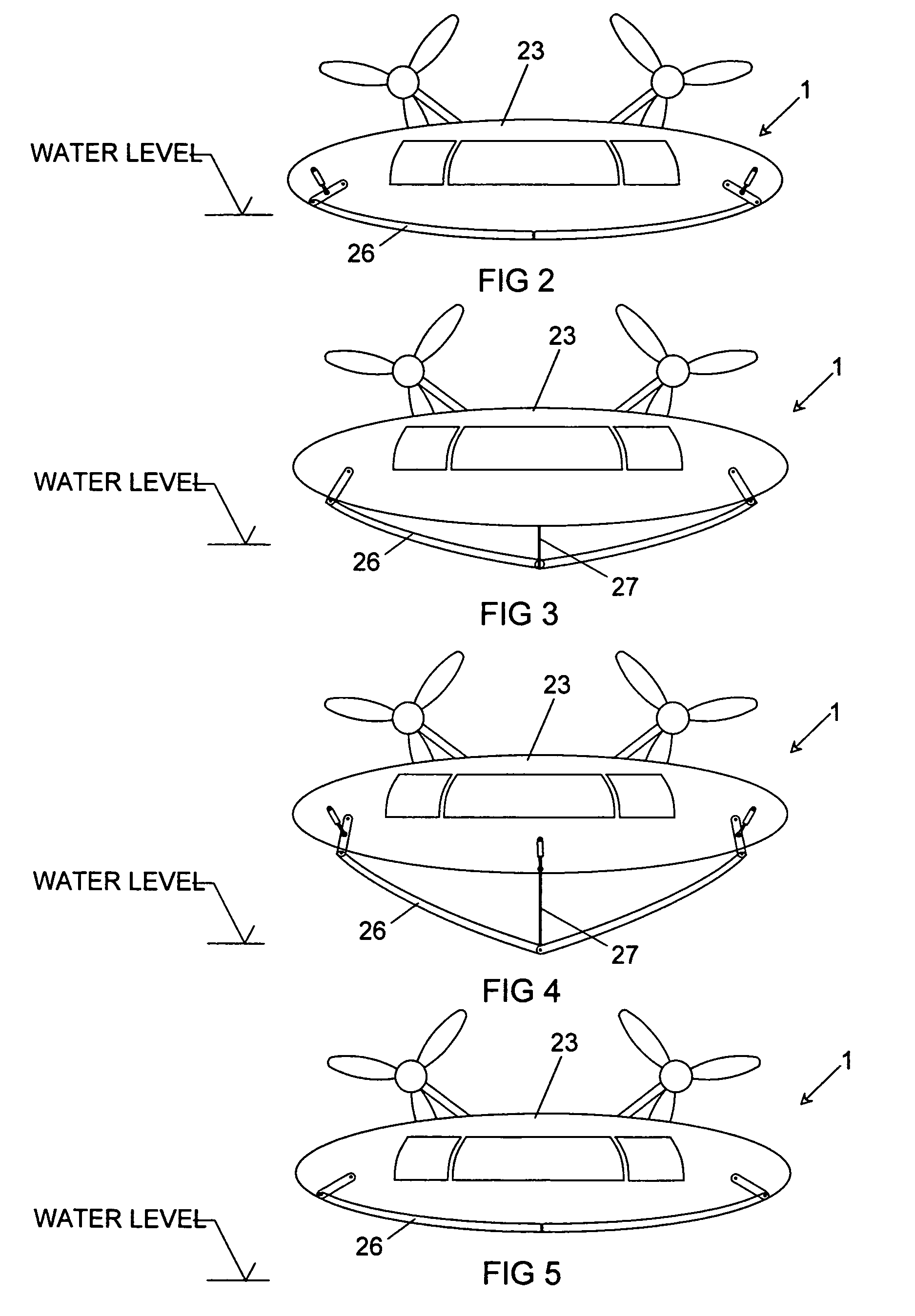Hydrofoil watercraft
a watercraft and foil technology, applied in the field of high-speed watercraft, can solve the problems of serious safety risk for occupants, early designs that failed to overcome the speed limitation of foil-in-water, and the hull was not aerodynamically efficient, so as to reduce electrical noise susceptibility, simplify operation, and ensure stability.
- Summary
- Abstract
- Description
- Claims
- Application Information
AI Technical Summary
Benefits of technology
Problems solved by technology
Method used
Image
Examples
Embodiment Construction
Cabin
[0019]A watercraft 1 includes a streamlined hull 23 with a flying wing shape (airfoil) for maximum lift and minimum drag when operating in ground-effect mode. Cabin access is through a watertight side door 29.
Power
[0020]Control of the watercraft 1 includes of a plurality of aircraft-style engines, positioned outside the main hull in a nacelles 20 that also house fuel tanks. This separates fuel and engines from passengers for improved safety. The nacelles 20 are attached to angled struts 22 with an airfoil cross-section as illustrated in FIG. 7.
Control
[0021]At high speed, the angled struts 22 exert a self-righting force in the case of left or right tilt (roll motion). The distinct arrangement causes the lower side to provide more vertical force returning the watercraft 1 to level operation. Each engine is individually controlled, and fitted with individually controlled variable-pitch air propellers 21. At any given engine speed the thrust of each propeller 21 can be adjusted by ...
PUM
 Login to View More
Login to View More Abstract
Description
Claims
Application Information
 Login to View More
Login to View More - R&D
- Intellectual Property
- Life Sciences
- Materials
- Tech Scout
- Unparalleled Data Quality
- Higher Quality Content
- 60% Fewer Hallucinations
Browse by: Latest US Patents, China's latest patents, Technical Efficacy Thesaurus, Application Domain, Technology Topic, Popular Technical Reports.
© 2025 PatSnap. All rights reserved.Legal|Privacy policy|Modern Slavery Act Transparency Statement|Sitemap|About US| Contact US: help@patsnap.com



